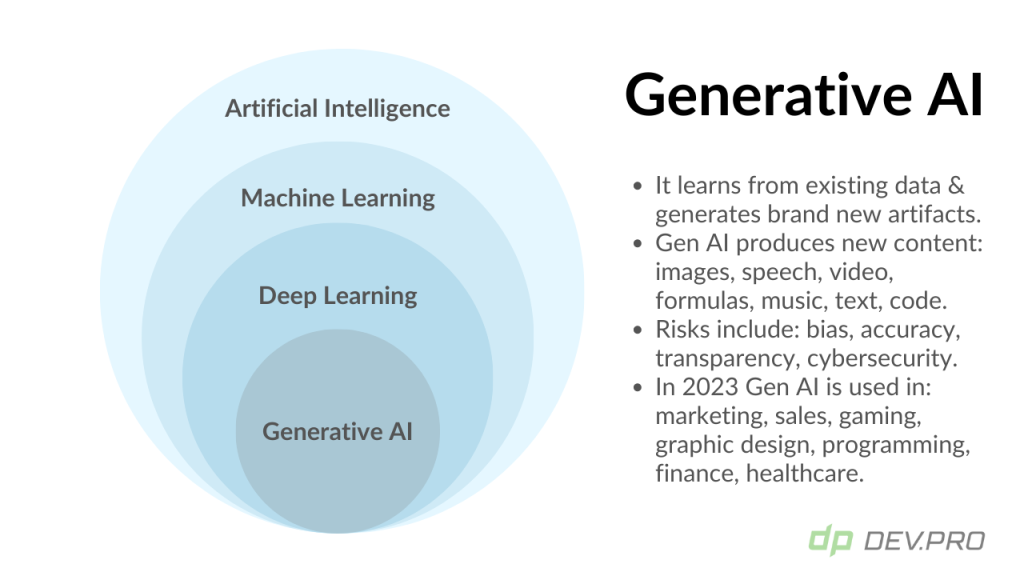In the realm of artificial intelligence, there’s a fascinating and innovative subfield known as Generative AI that’s been making waves in 2023. This technology enables computers to generate content that is not only astonishingly realistic but also surprisingly creative. In this article, we’ll break down the concept of Generative AI in simple terms, explore its relationship with Deep Learning and Machine Learning, distinguish between its subsets, and delve into the landscape of Generative AI models.
Understanding the Hierarchy: AI, Machine Learning, and Deep Learning
Artificial Intelligence (AI) is the overarching field that aims to create machines capable of intelligent behavior. Within AI, we have Machine Learning (ML), a subset that focuses on enabling machines to learn from data and improve their performance over time. Deep Learning (DL) is a subset of Machine Learning that employs neural networks with multiple layers to process and learn from vast amounts of data.
Deep Learning models can be broadly categorized into two main types: discriminative models and generative models. These models are essentially algorithms that help computers make sense of data and, in some cases, create new data.
- Discriminative Models: These models aim to classify input data into distinct categories. In other words, they “discriminate” between different classes or labels. For example, an image recognition model that identifies whether an image contains a cat or a dog is a discriminative model. It’s focused on discerning the differences between existing classes.
- Generative Models: Generative models, on the other hand, focus on creating new data that resembles the training data they were exposed to. Instead of simply labeling existing data, they generate entirely new data samples. Think of them as AI artists that can create new artwork, music, text, and more. They capture the underlying patterns and structures of the data and use them to generate new content.
Generative AI is a specialized subfield within Deep Learning

Generative AI landscape / Model types
- Text-to-text: takes a natural language input and produces a text output.
- Text-to-image: takes a large set of captioned images and produces a video representation from the text input.
- Text-to-video/Test-to-3D: takes a single sentence or full script and produces a video output corresponding to the text input.
- Text-to-task: takes text input and performs a defined task or action, such as answering a question, performing a search, or making a prediction based on the text input.

Generative AI represents a thrilling frontier where machines are not just learning from data, but actively creating new and imaginative content. As technology advances, the landscape of Generative AI continues to expand, promising a future where machines are not only intelligent but also remarkably creative.

Manoj Sharma is a thought leader and practitioner in the AI and Automation space. He is leveraging AI, Data Analytics and intelligent automation to identify strategic directions for large and small organizations. He is passionate about researching the possibilities of AI in industries including travel, healthcare, sustainability and identifying lean & practical AI solutions that can shape the future for Digital Enterprises. Manoj is founder and lead analyst for DecadeForward.AI which aims to help comprehend the complexity around AI.
